Latest Politics News
As India starts voting, what Modi government doesn’t tell you: a report card
Published
7 years agoon
By

In a sign of the times to come and the things to expect if Prime Minister Narendra Modi wins the elections again, the man has gone around brazenly pushing law, norms and Model Code of Conduct for election to the limits – if not actually defying them – in the election campaign.
He has invoked action taken by armed forces, the bravery and martyrdom of soldiers, Hindu vs Muslim support and deploying all means of communication dubiously to project himself.
On Tuesday, April 9, Modi openly flouted Election Commission of India’s (ECI) orders to refrain from using acts and photographs of armed forces in election campaign to ask for votes in the name of brave soldiers and martyrs at Latur in Maharashtra. The poll officer is reported to have told the Election Commission that prima facie, Modi’s speech violated the Model Code of Conduct.
This came on a day when several former bureaucrats and diplomats were reported to have complained to President Ram Nath Kovind about ECI’s “pusillanimity” in dealing with violations of model code of conduct by BJP and PM Modi.
This was also a day when The Wire ran a report punching holes in the attempts to evade action against NaMo TV, a channel solely devoted to projecting the PM, and showing how it violates the law.
Even earlier, Modi, far from having any compunctions about it, has merrily used official functions for political speeches and campaigns, targeting opposition leaders for “anti-national activities”.
There would be few Prime Ministers in the world whose actions have been directly called into question for violating not just basic norms and morals but the law and model of conduct so blatantly and with such a feeling of impunity as Narendra Modi.
These violations are recent, though fears have been expressed by many academicians, economists, artists, former bureaucrats and armed forced officers, apart from politicians, about institutions of democracy being subverted or compromised to support a government with a rather comprehensive record of under-achievements and failures and a few successes that can be counted on finger tips of one hand.
As veteran journalist Prem Shankar Jha wrote in The Wire, “all he (Modi) has created in the past five years is a factory for the suppression or falsification of economic data.”
Also Read: Election Commission bans release of Modi biopic during elections
The achievements – real and fake – are fed incessantly to people through every conceivable means of communication available, so we shall not go into them. We shall confine ourselves to its shortcomings and failures which would also expose the lies the government, the BJP and its various subsidiaries have been propagating.
National security
First is the Pulwama tragedy, the worst attack in entire history of insurgency in Kashmir, which helped Modi turn back the focus on ‘security’ and ‘Pakistan’, his favourite themes to avoid issues of economic mismanagement, unemployment, agrarian distress and misgovernance, brand the entire opposition as “anti-armed forces, anti-national and pro-Pakistan” and to project himself as the country’s one true patriot.
Writing in a NDTV blogpost, former Finance Minister Yashwant Sinha said: “The Pulwama terror attack was one of the most horrible in the long history of terror attacks in India. Why was such a large convoy of over 2,700 CRPF personnel allowed to travel by road on that fateful day? Why, despite intelligence reports of a possible terror attack, were no steps taken to sanitize the route and prevent such an attack? Why was the mastermind, identified and liquidated within 100 hours of the Pulwama attack, not dealt with earlier? Why was the request of the CRPF to move the troops by air not accepted? These and many others questions which reflect directly and poorly on the functioning of the government of India are not being asked and answered.”
Renowned journalist Prem Shankar Jha wrote in The Wire that the government had received no fewer than three warnings from the Intelligence Bureau and a more detailed one from the Kashmir police warning of the threat of an imminent attack.
Also Read: Rafale deal: SC rejects Modi govt objections, accepts ‘stolen’ documents as evidence
“The golden rule in intelligence analysis all over the world is that for a piece of information to be taken seriously it must be obtained from two independent sources. The pre-Pulwama warning passed the test.
“The CRPF brass, presumably, took the threats seriously, and asked for its jawans to be transported by air instead of sending them by road. It may have also suggested this because heavy snowfall had forced a bunching up of two convoys and was certain to slow their movement to a crawl. But the fact remains that it made the request, and the request was denied.
“Who had the power to deny such a request? In such an important matter, it is unlikely that the Ministry of Home Affairs would have declined on its own. What is more, had it actually done so, the air would have been full of recrimination and denials in the days that followed. But a full month later, there has been only silence. So it is beyond reasonable doubt that the request was denied by the PMO. And that means Modi. Why he would do that, only knows.
This is not the first time Modi has tried to turn mass death into political advantage. Modi was able to use the Godhra fire tragedy and the orchestrated massacres which followed to advance the Gujarat elections by four months, win it and remain the chief minister of Gujarat for the next 12 years. It would have been against his nature not to seize the ‘opportunity’ that the death of CRPF jawans would give him.”
Also Read: Better chance of peace talk with India if BJP wins Election: Imran Khan
While claiming credit for Indian Air Force’s retaliatory strike at Balakot (which he continues to do in violation of election Model Code of Conduct), Modi also jumped to take credit for DRDO’s anti-satellite missile (ASAT) test. While proprietary demanded that in election-time it should have been done by a DRDO official – and this has been pointed out by many – the whole thing appears to have been planned to be timed for elections. The plans became operationalised in the later half of last year and the satellite that was destroyed was reportedly launched in January for the test to happen around this time.
Doklam situation
China’s People’s Liberation Army (PLA) has made significant advances in constructing an ‘all-weather road’ that connects the Doklam plateau with its network of highways. According to latest updates from intelligence sources, a 12-km-long stretch of Merug La-Doklam road has been black-topped and is close to finishing, reported News18 in January this year.
In January 2018, several media reports had highlighted massive Chinese construction of a full-fledged military complex near the disputed plateau area. These reports went on to state that the Chinese were preparing themselves for another Doklam style face-off.
Reacting to these reports, Chinese officials had defiantly remarked, “We will keep building infrastructure in Doklam and India has no business to comment on construction activity on Chinese territory.”
During a US Congressional hearing, in June this year, a top US official stated that China had quietly resumed its activities in Doklam, News18 reported. The US official compared Beijing’s actions in the Himalayan region with their manoeuvres in the disputed South China Sea.
Also Read: Scrapping sedition law: fake propaganda that it is anti-national
Congresswomen Ann Wagner had asked during the hearing, “Although both countries back down, China has quietly resumed its activities in Doklam, and neither Bhutan nor India has sought to dissuade it. China’s activities in the Himalayas remind me of its South China Sea policies. How should our failure to respond to the militarisation of the South China Sea inform the international response to these Himalayan border disputes?”
To this, G Wells, the Principal Deputy Assistant Secretary of State for South and Central Asia, said, “I would assess that India is vigorously defending its northern borders and this is a subject of concern to India… we’re trying to gather likeminded countries who can bring resources to the table, who can coordinate assistance and an effort so as to provide countries with meaningful alternatives.”
India’s rankings in some crucial areas of concern
In rankings of Human Capital Index, evaluating performance on health and education India not only has a very low rank (at 115 among 157 countries), it is even lower than that of two of our poorer neighbours, Nepal and Bangladesh.
In the Social Hostilities Index, brought out by the Pew Research Center for 198 countries, at the end of 2016 India was among the eight worst countries.
In the World Press Freedom Index, brought out by Reporters without Borders, in 2017-18 India’s rank among 180 countries was low, at 138.
In the Rule of Law Index brought out by the World Justice Project for 113 countries, in 2017-18 India’s rank was 62.
In the Report of the Economist Intelligence Unit on the State of Democracy in the World for 2018, India is in the category of “flawed”, not full, democracy; out of 167 countries, India’s rank is 41, worse than Latvia, Taiwan or Botswana — the rank for India having sharply declined compared to 2014.
Claims of development
A report by Mint in the beginning of April this year, citing data from Centre for Monitoring Indian Economy (CMIE) said project announcements declined in the quarter ending March even as the number of stalled private projects reached a record high of 25.4%.
Another report based on CMIE data said the number of investment proposals in India saw the lowest number since 2004-05 in the previous financial year, which ended 31 March.
The CMIE said this lowest figure of new investments recorded in 14 years added up to ‘a dismal’ Rs 9.5 lakh crore.
Also Read: ‘People would seal PM’s lips with Leucoplast’: Mamata Banerjee
The report said last financial (FY18-19) year was the fourth consecutive year of decline in new investment proposals. ‘The estimate of 9.5 lakh crore will be revised upwards in the coming weeks. But, this is unlikely to change the fact that 2018-19 would be the year of very poor investment interest in India,’ said the report. The decline had begun in 2015-16.
The government itself has not fared much better. PM Modi loves to boast that he has not just laid foundation stones, he has also seen the projects through. According to a report prepared by the Ministry of Statistics and Program Implementation, as many as 363 infrastructure projects, each costing more than Rs. 150 crore, have shown a cost overrun of Rs. 3.42 lakh crore.
Of a total of 1,452 delayed projects, 700 did not show even the year of commissioning.
Of the 375 delayed projects, 111 were stalled by one to 12 months, 61 between to 13 to 24 months, 95 between 25 to 60 months and more than 100 projects by 61 months and more.
Wage earners under MGNREGA have not been paid because of the lack of funds, according to a study by the Majdoor Kisan Shakti Sangathan
In other words, in its five years, the government could not complete a single project from the 200-odd it inherited from the previous Congress-led UPA government or which started in its first year since taking power in 2014, pointed out former Finance Minister Yashwant Sinha in a NDTV blogpost.
In the three years between October 2015 and October 2018, credit to the MSME sector declined from 5.9% to 4.5% according to the data released by the RBI.
The wage earners under the Mahatma Gandhi National Rural Employment Guarantee Act (MGNREGA), whose number had shot up steeply after demonetization in November 2016, are suffering as they have not been paid because of the lack of funds, according to a study by the Majdoor Kisan Shakti Sangathan, which also alleged that attempts are being made to willfully cap employment opportunities under the job guarantee Act.
There is a shortfall of at least Rs. 17,000 crore from the wage demand of just the last year.
“A job under this scheme is the last resort for the labourer who picks up work under MGNREGA. It is a crime to hold back his wages,” wrote Yashwant Sinha.
Also Read: BJP releases poll manifesto for 2019 Lok Sabha Elections
The Rs. 95,000-crore scam in the IL&FS group has gone largely unnoticed. The Life Insurance Corporation is the single largest shareholder in this company and so are other government entities like the Central Bank of India and the State Bank of India. This scam took place largely on the government’s watch and it cannot wash its hands of the responsibility as the stakeholders are government companies.
Ujjwala Yojana
This is among the major successes touted by Modi government. This relates to providing gas connections and stoves to poor and is said to have emancipated millions of poor women from unhealthy smoke from ordinary earthen stoves using fuel-wood.
A report by Factchecker found that while gas connections increased 6 percentage points between 2015-16 and 2016-17, LPG consumption increased only marginally (0.8 percentage points) during the same period, Mint reported on June 28, 2017.
Only a few Ujjwala beneficiaries are refilling cylinders, Scroll.in reported on June 11, 2017, citing response from gas agency dealers. BPL families find a refill too expensive after their first connection, the report said.
Even now, anecdotal evidence shows that things have not improved.
Highway construction – most highlighted among infrastructure development
This is often cited by Union ministers and the BJP as evidence of massive improvement in infrastructure under Modi government. However, as in the case of other sector of economy or even the controversy over GDP figures, here too the data is misleading. Media reports last April (Business standard and Hindustan Times) said the government had shifted to new formula to show highway construction in better light.
Now, lane-km has replaced linear length method. This was explained as being in line with international norms and provide a more realistic picture.
For instance if a 14-lane highway is being constructed, the total linear length of the 14 lanes is considered at the time of calculating the length of road built. Earlier, in India whether it was a 4-lane, 6-lane or an 8-lane highway, for example, construction of one kilometre length was considered as total one kilometre.
Going by lane km, the total length of highways constructed during 2017-18 fiscal comes to 34,378 km as against 9829 km if counted linearly.
Jobs
This has been a major shortcoming of the Modi government. The country’s unemployment rate stood at a 45-year high of 6.1% last year (2017-18) according to the National Sample Survey Office’s (NSSO) periodic labour force survey (PLFS) reported by Business Standard (BS).
This is the data which Prime Minister Narendra Modi government has withheld, prompting the two independent members of National Statistical Commission (NSC) – acting chairman PC Mohanan and member JV Meenakshi – to resign.
But apart from the job front, there is a whole range of other government reports and statistics that is usually updated periodically, which Modi government has not made public for years: data on crime, farmer suicides, caste and agricultural wages, found an IndiaSpend research.
Earlier, surveys conducted by the Centre for Monitoring Indian Economy (CMIE) said that 1.1 core jobs were lost last year.
Inconvenient Data withheld
Modi government has kept the country in the dark about several important indicators that are essential for policy making and governance.
Recently, there have also been concerns raised over data going missing from the websites of centrally-sponsored schemes. For example, several sets of data were removed from the Swachh Bharat-Gramin website, including data on expenditure, conversion of insanitary toilets which foster manual scavenging, and several details of toilet construction, as IndiaSpend reported on October 6, 2018.
The accidents and suicides report, which provides information on farmer suicides and is brought out by the National Crime Records Bureau (NCRB), has not been released for four years now.
Data on foreign direct investment, brought out every quarter by the department of industrial policy and production (DIPP), have not been released since June 2018, despite the Reserve Bank of India (RBI) providing it with regular inputs, according to this Business Today report published on January 29, 2019.
When the central government released the socio-economic profile of the population generated through the Socio-Economic Caste Census (SECC) in 2015, it withheld data on caste despite demands from opposition parties and ministers within the government, a report in The Economic Times said in September 2018.
The report of a Comprehensive National Nutrition Survey–started towards the end of 2016 to create comprehensive nutritional profiles of preschoolers (0-4 years), school-age children (5-14 years) and adolescents (15-19 years)–has been ready but not released.
New ideas/schemes
As for ‘innovative’ schemes and ideas by Modi government, an analysis by FactChecker found that Modi has merely renamed 19 out of 23 Congress schemes. It was checking Congress MP Shahsi Tharoor’s claim of June 15, 2017, that 23 of the BJP-led government’s new programmes were merely renamed versions of schemes launched by the previous governments led by his party.
The analysis found that 19 of the 23 programmes were indeed renamed versions of older schemes, as Tharoor claimed.
Here are the renamed schemes with the original nomenclature:
1: Pradhan Mantri Jan Dhan Yojana = Basic Savings Bank Deposit Account
2: Beti Bachao, Beti Padhao Yojana = National Girl Child Day programmes
3: Swach Bharat Abhiyan = Nirmal Bharat Abhiyan
4: Sardar Patel National Urban Housing Mission = Rajiv Awaas Yojana
5: Pradhan Mantri Awaas Yojana (Gramin) = Indira Awaas Yojana
6: Deen Dayal Upadhyay Gram Jyoti Yojana = Rajiv Grameen Vidyutikaran Yojana
7: Atal Mission for Rejuvenation and Urban Transformation = Jawaharlal Nehru National Urban Renewal Mission
8: Pradhan Mantri Krishi Sinchayee Yojana = Accelerated Irrigation Benefits Programme
On this, the analysis said it was not clear if it was a renamed scheme as full details are not available on government websites. Three older programmes – Accelerated Irrigation Benefits Programme of the water resources ministry, Integrated Watershed Management Programme of the land resources ministry and the On Farm Water Management of agriculture and cooperation department – were merged to create the NDA’s Pradhan Mantri Krishi Sinchayee Yojana, according to Yojana’s website.
As government websites do not reveal when exactly the programme was launched in 1996, it is difficult to check this claim, as three prime ministers – Congress’s PV Narasimha Rao (till 16 May), BJP’s Atal Bihari Vajpayee (16 May-1 June) and Janata Dal (Secular)’s HD Deve Gowda (1 June onwards) – governed India during 1996.
The watershed management programme goes back to the late 1980s when the country was mostly under Congress’s rule.
9: BJP’s neem-coated urea = Congress’s neem-coated urea
10: Soil Health Card scheme = National Project on Management of Soil Health and Fertility
11: Paramparagat Krishi Vikas Yojana = Rashtriya Krishi Vikas Yojana and other programmes
12: Pradhan Mantri Matritva Vandana Yojana = Indira Gandhi Matritva Sahyog Yojana
On this, too, it was unclear. The ministry of women and child development’s website does not use the new name –Pradhan Mantri Matritva Vandana Yojana – for the maternity benefit programme but archives releases under the Indira Gandhi Matritva Sahyog Yojana under the same head.
A senior ministry official was quoted as saying the name had been changed, Hindustan Times reported on 25 May 2017.
Also Read: Retired civil servants write to President about Election Commission’s crisis of credibility
13: Atal Pension Yojana = Swavalamban Yojana
14: Pradhan Mantri Jan Aushadhi Yojana = Jan Aushadhi scheme
15: Pradhan Mantri Fasal Bima Yojana = Comprehensive Crop Insurance Scheme
This was found to be false as it did not exist when Modi government assumed office. It was relaunched, but the concept was not new. The 1985 Comprehensive Crop Insurance Scheme concluded in 1999, according to this report of the agriculture and cooperation department.
16: Make In India = National Manufacturing Policy
17: Digital India = National eGovernance Plan
18: Skill India = National Skill Development Programme
19: Mission Indradhanush = Universal Immunisation Programme
20: Deen Dayal Upadhyaya Grameen Kaushalya Yojana = National Rural Livelihood Mission
21: PAHAL = Direct Benefits Transfer for LPG
22: BharatNet = National Optic Fibre Network
23: Sagarmala = National Maritime Development Programme
This was found to be false as the older programme had lapsed. It wasn’t a new concept or original idea, however. The programme was originally announced by Former Prime Minister Atal Behari Vajpayee on 15 August 2003, during the BJP-led NDA’s first stint in power, Frontline reported in March-April 2004.
When the Congress-led UPA came to power, it launched its own National Maritime Development Programme even as Sagarmala lapsed, according to this Lok Sabha answer on 3 August 2009.
The NDA revived the original programme on 25 March 2015.
The Chowkidar and his drive against corruption
Taking Modi’s boast of being a crusader against corruption and #MainBhiChowkidar campaign, apart from the Rafale deal, the IL&FS scam, the favours to Ambani and Adani, another aspect is what it has done to the institutions intended to serve as watchdogs or “chowkidars” of the Indian government.
Lokpal: Modi government was pushed by the Supreme Court into appointing the Lokpal last month. It still has to set up various agencies for investigation and prosecution envisaged under the law.
Judiciary: The Modi government picked fights with the judiciary, particularly over appointments, as soon as it came to power. Until the very end, it tried to pick and choose which judges it wanted to see elevated to higher office. It was also during Modi’s tenure that four senior Supreme Court judges held an unprecedented press conference claiming democracy was at stake because of the conduct of the Chief Justice of India, with murmurs of pressure from the government.
There were also questions around the death of Special CBI Judge BH Loya and the suicide note of former Arunachal Pradesh Chief Minister Kalikho Pul, which had many references to the government and the judiciary.
CBI: India’s premier investigation agency saw infighting like never before as the No 1 and no 2 officers of the CBI. The Centre finally decided to step in, issuing what the Supreme Court later said was a patently illegal, partisan order. The officers involved were eventually moved out, but many threads of their allegations remain, and it is still not clear why this happened on Modi’s watch.
Election Commission of India: The Election Commission, responsible for ensuring free and fair polls, has been under attack not only from opposition parties but has been criticised even by eminent former civil servants who wrote to President complaining about its pusillanimity and crisis of credibility and accusing it of acting in a partisan manner in favour of the BJP.
Also Read: PM Modi appeal to dedicate votes to soldiers is prima facie violation of poll code: Poll officer
This was not the only time the Election Commission was questioned for taking a view perceived as favourable to the Centre, including most prominently in deciding the dates for elections – as in the case of Gujarat elections.
Central Information Commission: The Right to Information Act literally empowers every Indian citizen to be a “chowkidar”. So naturally, the current government sought to amend the law, making changes that activists said would clearly dilute it. The government eventually backed down in the face of public pressure. It has also consistently run the commission under-staffed, which many have argued is a way of diluting the RTI act, even without amending it.
Reserve Bank of India: The central bank is the custodian of the economy, meant to ensure that it takes a longer view of economic decision-making than the government of the day. Under Modi, the Reserve Bank of India saw the first resignation of a sitting governor since the 1950s, and the suggestion that the government may pull out the never-before-used Section 7 of the RBI Act to force the central bank into doing things, including handing money over to the Centre.
Rajya Sabha: In some ways, the Rajya Sabha exists to keep a check on the Lok Sabha, particularly on behalf of the states. It is meant to ensure that legislation cannot be bulldozed through Parliament by a brute majority. However, the Modi government has repeatedly made efforts to bypass the upper house. Early on, Finance Minister Arun Jaitley gave many lectures about how the “unelected” Rajya Sabha could have the temerity to question the other House. But later, the government simply decided to put its controversial legislative decisions into Money Bills that bypass the Rajya Sabha.
You may like
-


Omar Abdullah distances INDIA bloc from Congress’s vote chori campaign
-


Nitin Nabin terms BJP working president role a party blessing, thanks leadership
-
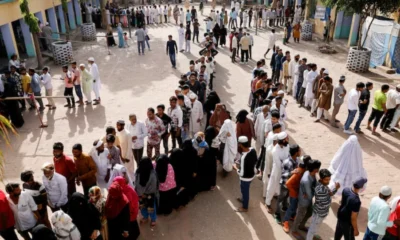

EC extends SIR deadlines for 6 states, no change for West Bengal
-
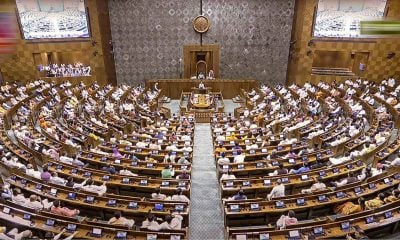

Lok Sabha set for 10-hour debate on electoral reforms today
-


Rahul Gandhi attacks Centre ahead of Vladimir Putin’s India visit
-
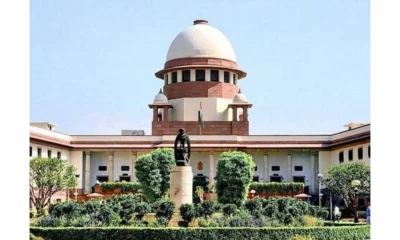

EC terms Bengal’s mass voter deletion allegations false in affidavit to Supreme Court
India News
Renaming MGNREGA removes core spirit of rural employment law, says Shashi Tharoor
Published
2 days agoon
December 19, 2025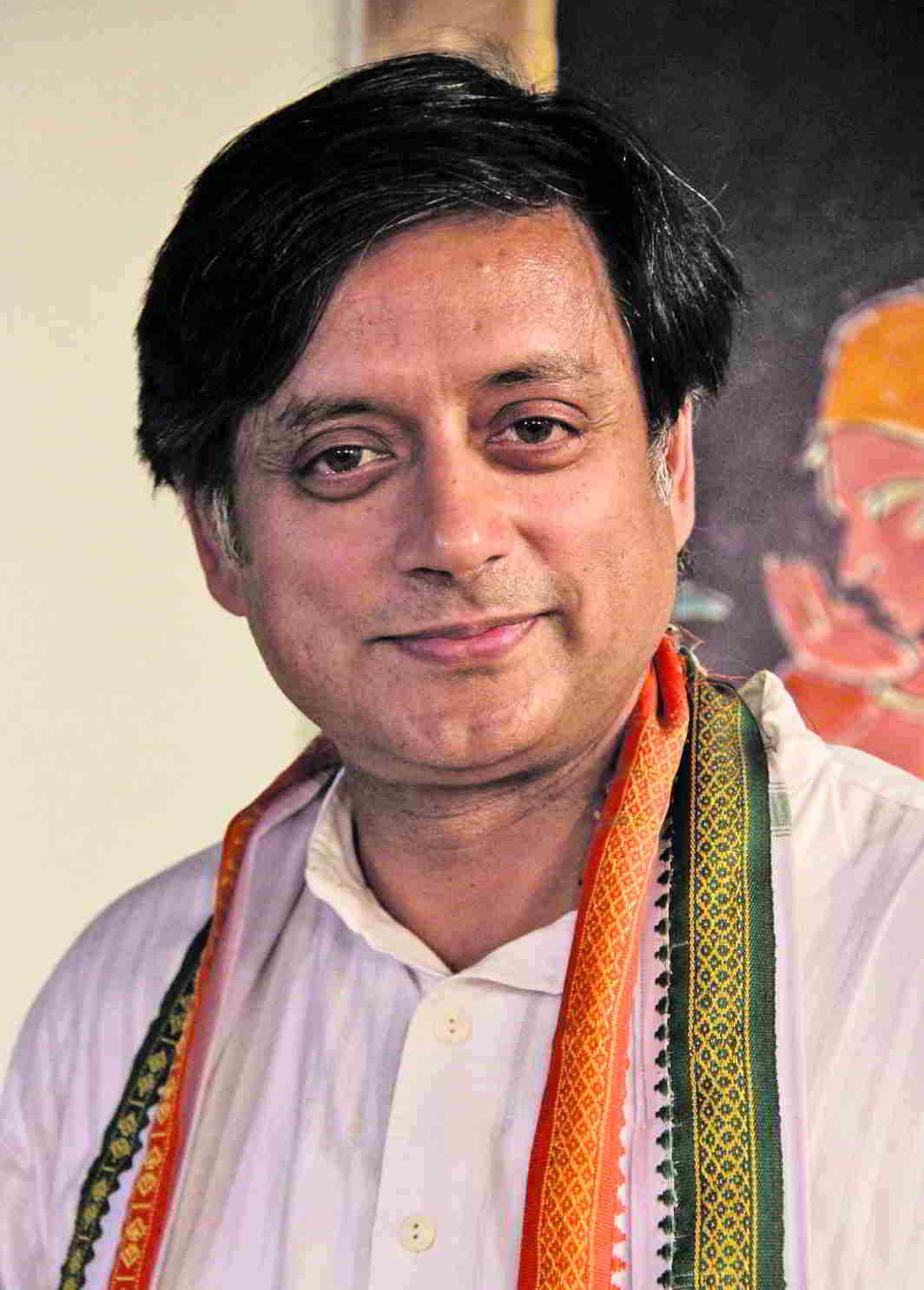
Congress MP Shashi Tharoor has strongly criticised the renaming of the Mahatma Gandhi National Rural Employment Guarantee Act (MGNREGA), saying the move strips the rural employment programme of its core essence. His remarks came after Parliament cleared the Viksit Bharat Guarantee for Rozgar and Ajeevika Mission (Gramin) Bill, also referred to as the VB-G RAM G Bill.
Speaking to media, Tharoor said the decision to remove Mahatma Gandhi’s name from the scheme “takes out the heart” of the rural employment programme that has been in place for years. He noted that the identity and philosophy associated with Mahatma Gandhi were central to the original law.
Tharoor also objected to the way the new name was framed, arguing that it unnecessarily combined multiple languages. He pointed out that the Constitution envisages the use of one language in legislation, while the Bill’s title mixes English and Hindi terms such as “Guarantee”, “Rozgar” and “Ajeevika”, along with the conjunction “and”.
‘Disrespect to both names’
The Congress leader said that inserting the word “Ram” while dropping Mahatma Gandhi’s name amounted to disrespecting both. Referring to Mahatma Gandhi’s ideas, Tharoor said that for Gandhi, the concepts of Gram Swaraj and Ram Rajya were inseparable, and removing his name from a rural employment law went against that vision.
He added that the name of Lord Ram could be used in many contexts, but questioned the rationale behind excluding Mahatma Gandhi from a programme closely linked to his philosophy of village self-rule.
Protests over passage of the Bill
The VB-G RAM G Bill was passed by the Lok Sabha on December 18 and cleared by the Rajya Sabha in the early hours of December 19 amid protests from Opposition members. Several MPs opposed the manner in which the legislation was pushed through, with scenes of sloganeering and tearing of papers in the House.
Outside Parliament, members of the Trinamool Congress staged a sit-in protest near Samvidhan Sadan against the passage of the Bill. Congress also announced nationwide protests earlier this week, accusing the government of weakening rights-based welfare schemes.
Despite opposition criticism, the government has maintained that the new law will strengthen rural employment and livelihood security. The Bill raises the guaranteed employment from 100 days to 125 days per rural household and outlines a 60:40 cost-sharing formula between the Centre and states, with a higher central share for northeastern, Himalayan states and certain Union Territories.
India News
Rahul Gandhi attacks G RAM G bill, says move against villages and states
Rahul Gandhi has criticised the G RAM G bill cleared by Parliament, alleging it dilutes the rights-based structure of MGNREGA and centralises control over rural employment.
Published
2 days agoon
December 19, 2025
Leader of the Opposition Rahul Gandhi has launched a sharp attack on the Modi government after Parliament cleared the Viksit Bharat Guarantee for Employment and Livelihood Mission (Rural) Bill, commonly referred to as the ‘G RAM G’ bill. He described the proposed law as “anti-state” and “anti-village”, arguing that it weakens the core spirit of the Mahatma Gandhi National Rural Employment Guarantee Act (MGNREGA).
The new legislation, which is positioned as an updated version of MGNREGA, was passed amid protests by opposition parties and is expected to replace the existing scheme once it receives presidential assent.
‘Bulldozed without scrutiny’, says Rahul Gandhi
Rahul Gandhi criticised the manner in which the bill was cleared, saying it was pushed through Parliament without adequate debate or examination. He pointed out that the opposition’s demand to refer the bill to a standing committee was rejected.
According to him, any law that fundamentally alters the rural employment framework and affects crores of workers should undergo detailed scrutiny, expert consultation and public hearings before approval.
Claim of dilution of rights-based guarantee
Targeting the central government, the Congress leader said the proposed law dismantles the rights-based and demand-driven nature of MGNREGA and replaces it with a rationed system controlled from Delhi. He argued that this shift undermines the autonomy of states and villages.
Rahul Gandhi alleged that the intent behind the move is to centralise power and weaken labour, particularly impacting rural communities such as Dalits, OBCs and Adivasis.
Defence of MGNREGA’s impact
Highlighting the role of MGNREGA, Gandhi said the scheme provided rural workers with bargaining power, reduced distress migration and improved wages and working conditions, while also contributing to rural infrastructure development.
He also recalled the role of MGNREGA during the Covid period, stating that it prevented crores of people from slipping into hunger and debt. According to him, any rationing of a jobs programme first affects women, landless workers and the poorest communities.
Opposition to name change and provisions
The Congress has also objected to the renaming of the scheme, accusing the government of attempting to erase the legacy associated with Mahatma Gandhi. Opposition MPs staged a dharna within the Parliament complex, questioning provisions of the bill that they claim dilute the “soul and spirit” of the original law enacted in 2005.
Under MGNREGA, the government guaranteed 100 days of work in rural areas along with an unemployment allowance if work was not provided. The ‘G RAM G’ bill proposes to raise the guaranteed workdays to 125, while retaining other provisions. However, critics have flagged concerns over employment being linked to pre-approved plans.
The bill was cleared after a midnight voice vote in the Rajya Sabha, following its passage in the Lok Sabha amid protests and walkouts. It will become law once approved by the President.
India News
AAP dominates Punjab zila parishad polls, leads in most panchayat samiti zones
AAP has won 201 out of 317 declared zila parishad zones in Punjab so far and is leading in a majority of panchayat samiti seats, with counting still underway.
Published
2 days agoon
December 18, 2025
The ruling Aam Aadmi Party (AAP) has recorded a strong performance in the Punjab zila parishad elections and is leading in the majority of panchayat samiti zones, as per results declared so far on Thursday. The counting process is still underway and complete results are awaited, officials said.
Polling for the rural local bodies was held on December 14 to elect representatives across 347 zones of 22 zila parishads and 2,838 zones of 153 panchayat samitis in the state.
AAP secures clear edge in zila parishads
According to the available results, outcomes have been declared for 317 zila parishad zones so far. Of these, the AAP has won 201 zones, placing it well ahead of other parties.
The Congress emerged second with victories in 60 zones, followed by the Shiromani Akali Dal (SAD) with 39 zones. The BJP won four zones, the BSP secured three, while independents claimed 10 zones.
District-wise data shows that the AAP won 22 zones in Hoshiarpur, 19 each in Amritsar and Patiala, 17 each in Tarn Taran and Gurdaspur, and 15 zones in Sangrur. The Congress registered its best performances in Gurdaspur and Ludhiana with eight zones each, followed by Jalandhar with seven zones. The SAD performed strongly in Bathinda with 13 zones, while the BJP managed to win four zones in Pathankot.
AAP leads in panchayat samiti results
In the panchayat samiti elections, trends declared so far indicate that the AAP is leading in a majority of zones. However, officials clarified that counting is ongoing and the final picture will be clear only after all ballot papers are tallied.
Kejriwal, Mann reject opposition allegations
Reacting to the trends, AAP supremo Arvind Kejriwal said the party’s performance reflected strong rural support for the Bhagwant Mann government’s work. Addressing the media in Mohali along with Chief Minister Bhagwant Mann, Kejriwal dismissed allegations of irregularities raised by opposition parties.
He said the elections were conducted in a fair and free manner and claimed that the results so far showed a clear wave in favour of the AAP in rural Punjab. Kejriwal stated that nearly 70 per cent of the zila parishad and panchayat samiti seats had gone in favour of the party.
Congress, SAD question poll conduct
The Congress and the Shiromani Akali Dal, however, accused the ruling party of misusing official machinery. Punjab Congress chief Amrinder Singh Raja Warring alleged that the AAP had “stolen” the rural mandate and claimed that the results did not reflect genuine public support.
Opposition parties had earlier also accused the AAP government of high-handedness during the polling process, allegations that the ruling party has strongly denied.

T20 World Cup 2026: Selectors weigh Shubman Gill role as India squad announcement awaited

India vs South Africa 5th T20I: Hardik Pandya, Tilak Varma power India to 30-run win, series sealed 3-1

PM Modi inaugurates India’s first nature-themed airport terminal in Assam

Thick smog engulfs Delhi, flights and trains delayed as air quality slips to very poor

Assam train accident: Eight elephants killed after Rajdhani Express derailment in Hojai

India announces T20 World Cup 2026 squad, Shubman Gill dropped as Axar Patel named vice-captain

Veteran Malayalam actor and filmmaker Sreenivasan passes away at 69

T20 World Cup 2026: Selectors weigh Shubman Gill role as India squad announcement awaited

Thick smog engulfs Delhi, flights and trains delayed as air quality slips to very poor

PM Modi inaugurates India’s first nature-themed airport terminal in Assam
Afghan Men Try To Hang With The Jet Engine Of The Aircraft in Kabul- Afghanistan News – Kabul News
Trending Top 10 News: 10000 Crore Fine on Flipkart, Apple to Launch Unique Feature, Hdfc Bank Job Ad
Trending Top 10 News: Nokia 6310, Apple sales, Bachpan ka Pyar Video Kid, Dainik Bhaskar IT Raid
Trending Top 10 News: Canada bans Indian flights, Rain in Delhi NCR, AIMIM Twitter hacked, Raj Kundra case
Trending Top 10 News: Shein India, Apple New Service, Pocket Oxygen, Oppo Launched New Phone
Trending
-
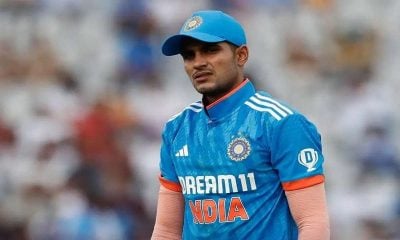
 Cricket news17 hours ago
Cricket news17 hours agoT20 World Cup 2026: Selectors weigh Shubman Gill role as India squad announcement awaited
-

 Cricket news18 hours ago
Cricket news18 hours agoIndia vs South Africa 5th T20I: Hardik Pandya, Tilak Varma power India to 30-run win, series sealed 3-1
-

 India News18 hours ago
India News18 hours agoPM Modi inaugurates India’s first nature-themed airport terminal in Assam
-
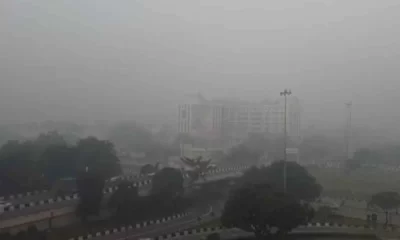
 India News18 hours ago
India News18 hours agoThick smog engulfs Delhi, flights and trains delayed as air quality slips to very poor
-
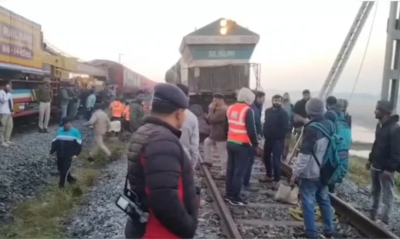
 India News18 hours ago
India News18 hours agoAssam train accident: Eight elephants killed after Rajdhani Express derailment in Hojai
-

 Entertainment14 hours ago
Entertainment14 hours agoVeteran Malayalam actor and filmmaker Sreenivasan passes away at 69
-

 Cricket news14 hours ago
Cricket news14 hours agoIndia announces T20 World Cup 2026 squad, Shubman Gill dropped as Axar Patel named vice-captain

